
Plus all the gimmicks.
15. Project X (1968, 97 minutes)
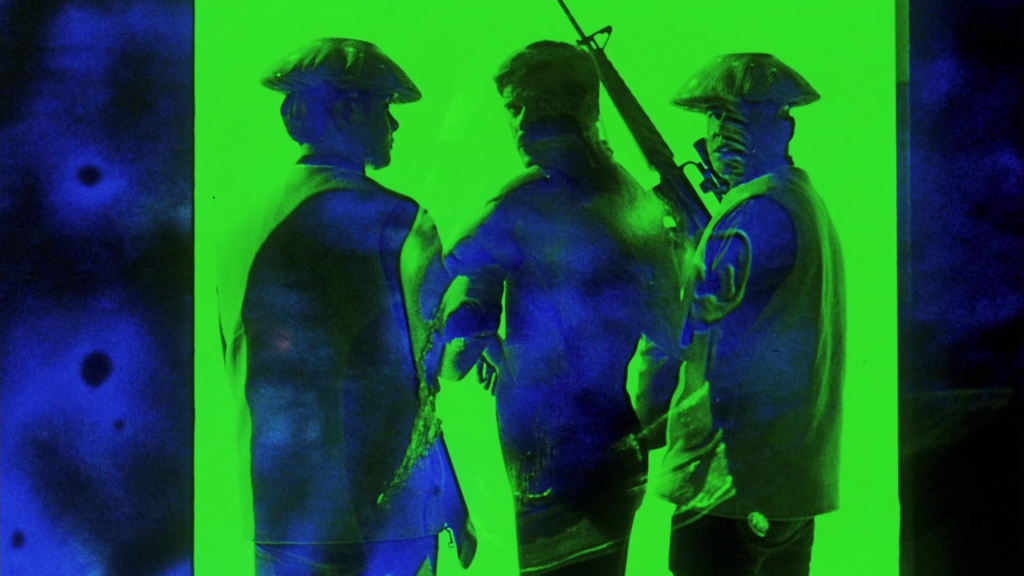
The year is 2118, and an American spy, Hagen Arnold (Christopher George), sends a message back from Sino-Asia: “The West will be destroyed in fourteen days.” Arnold was injected with an anti-torture drug that triggers memory loss after extreme pain. When he returns to the United States, the government attempts to recover the meaning of his message in a holographic memory reading device, which is sort of like the holodeck on The Next Generation. Illogical but exposition-heavy, Project X is the only movie on this list that I genuinely dislike—and also one of the longest. Full of pompous psychobabble (“The image a man sees in his mirror is one thing, and what the mind sees filtered through the mechanism of his ego is often quite another”), this is Castle at his pseudo-Freudian worst. Shimmering, silent footage and Hanna-Barbera animation do nothing to enhance the experience of a B-movie Manchurian Candidate (1962). I always hated the holodeck episodes of TNG.
The Gimmick: None
14. The Night Walker (1964, 86 minutes)

A woman (Barbara Stanwyck) is haunted by recurring nightmares of her husband (Hayden Rorke), who died in a fire. There is a nice soundtrack that evokes the music of Nino Rota, and Stanwyck brings some A-list class, but The Night Walker is an otherwise dreadful movie that drags after the first scene. A weak imitation of Hitchcock’s Spellbound (1945). It played to empty theaters.
The Gimmick: None.
13. Macabre (1958, 72 minutes)
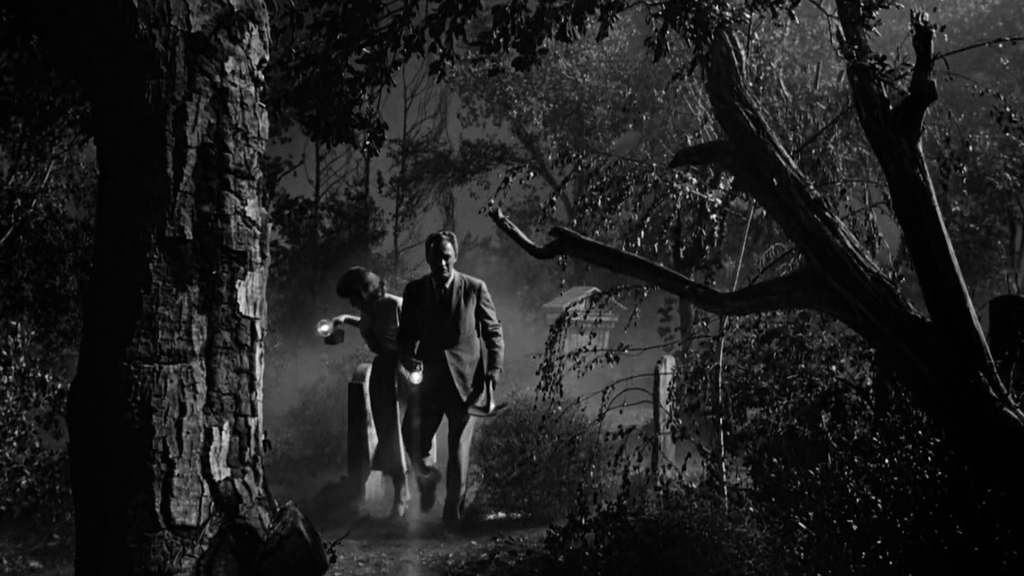
A doctor (William Prince) receives a phone call and is told his three-year-old daughter (Linda Guderman) has been buried alive. He has five hours to rescue her. A somewhat forgettable thriller in the style of Henri-Georges Clouzot’s Les Diaboliques (1955), Macabre is important for the new direction it provided Castle’s career. He mortgaged his house to fund the movie, and it was his first to feature a gimmick. The most memorable moment is the opening warning: “Ladies and gentlemen, for the next hour and fifteen minutes, you will be shown things so terrifying that the management of this theater is deeply concerned for your welfare. Therefore, we request that each of you assume the responsibility of taking care of your neighbor. If anyone near you becomes uncontrollably frightened, will you please notify the management so that medical attention can be rushed to their aid? Please set your watches.”
The Gimmick: Castle took out an insurance policy from Lloyds of London that guaranteed $1000 to any viewer who died of fright. He also put uniformed nurses and an ambulance outside theaters. No one ever collected on the policy.
12. The Spirit Is Willing (1967, 100 minutes)
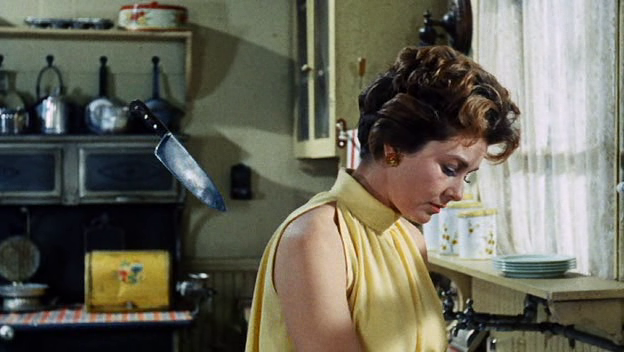
Three ghosts do the work of thirteen when an overworked man (Sid Caesar), his wife (Vera Miles), and their teenage son (Barry Gordon) move into a haunted house. The movie could have been titled The Spirit Is Down to Fuck, and one horny ghost (Jill Townsend) beds three characters, including the teenager, his psychologist (John Astin), and his uncle (John McGiver). There’s also a “frustrated virgin ghost,” so we have all kinds of postmortem sex lives covered. Unfortunately, this all sounds better than the movie Castle made, which tries too hard and fails too often. Made during the tail end of his war against the TV, which he lost.
The Gimmick: None.
11. Shanks (1974, 93 minutes)
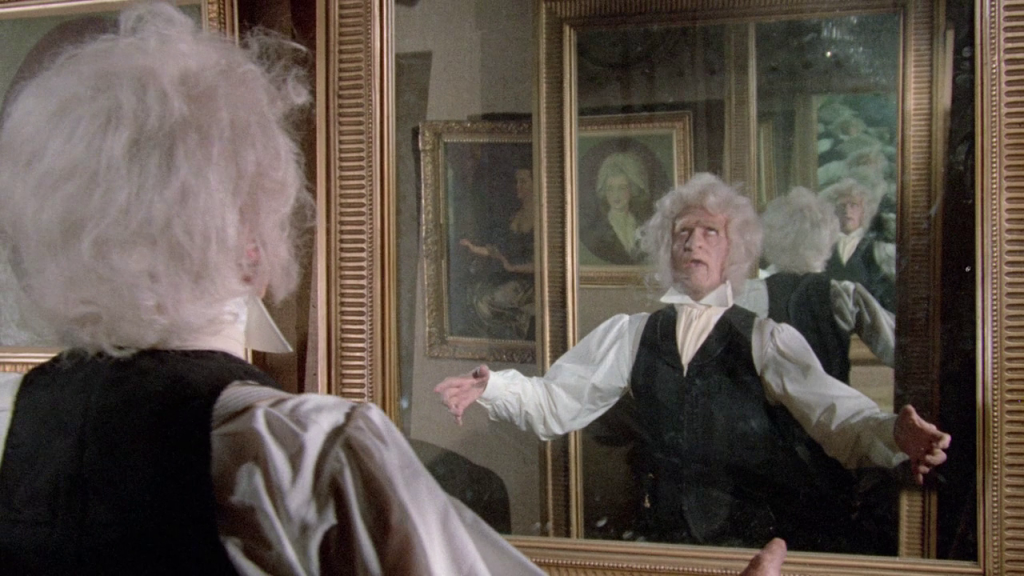
A “grim fairy tale” about a mute puppeteer, Shanks (Marcel Marceau), who works for a scientist (also Marceau) experimenting with reanimation. When the scientist dies, Shanks uses the reanimation machine to pull the strings, so to speak, of the dead, putting their bodies through Rube Goldberg effort for underwhelming results—i.e., the lighting of a cigar—before realizing he can use them for revenge. With title cards and little dialogue, Shanks plays like a silent movie, much like the murder scene in The Tingler. This was Castle’s first time as director since he handed the job over to Roman Polanski on Rosemary’s Baby (1968), and it’s heartening that his work remains experimental this late in his career. Still, it’s not a good movie. I’m not sure what to make of Shanks’ creepy relationship with a young girl (Cindy Eilbacher), and there’s a huge and unwarranted tonal shift in the final third, leaving something of a sour taste.
The Gimmick: None.
10. I Saw What You Did (1965, 82 minutes)
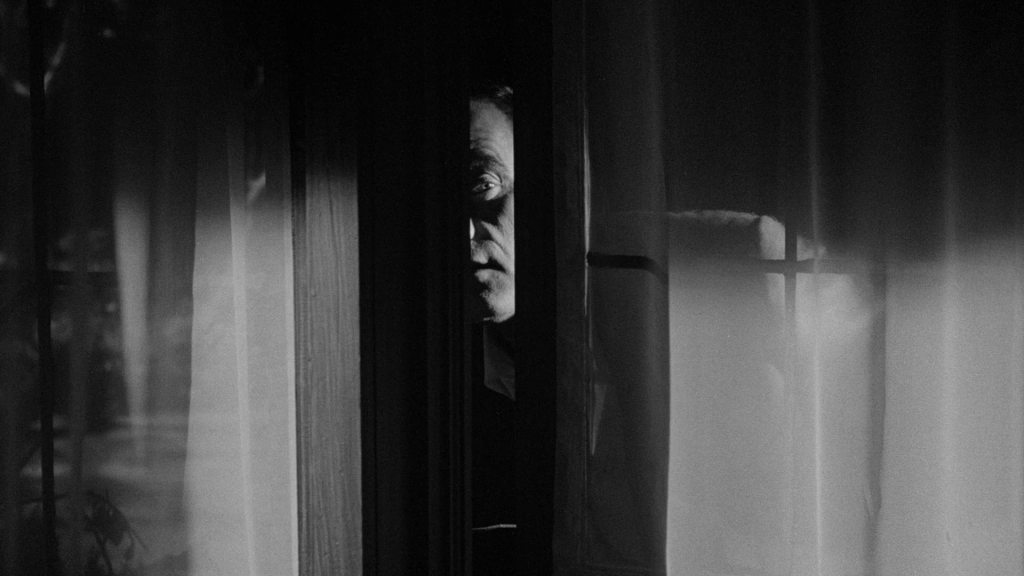
Three girls make prank calls, each time saying, “I saw what you did, and I know who you are.” But this innocent joke of ruining people’s marriages turns deadly when they call a man (John Ireland) who just killed his wife (Joyce Meadows). A solid premise—one that would be used to better effect in John Dahl’s Joy Ride (2001)—is wasted in poor execution. This includes another riff on Psycho and a cat-and-mouse ending that is meh.
The Gimmick: Castle put huge plastic phones in front of theaters. He also placed a phone number in the newspapers that readers could call. They would hear, “I saw what you did, and I know who you are,” before the voice would arrange to meet the caller at a theater playing the movie. According to Castle, the gimmick backfired when teenagers responded by “jamming the phone lines” with thousands of prank calls. The phone companies removed the plastic phones from in front of the theaters and prohibited Castle from advertising any numbers. He was left with the “shock section” of the theater, where he installed seatbelts (years before Star Trek used the same image in their marketing).
9. The Old Dark House (1963, 86 minutes)
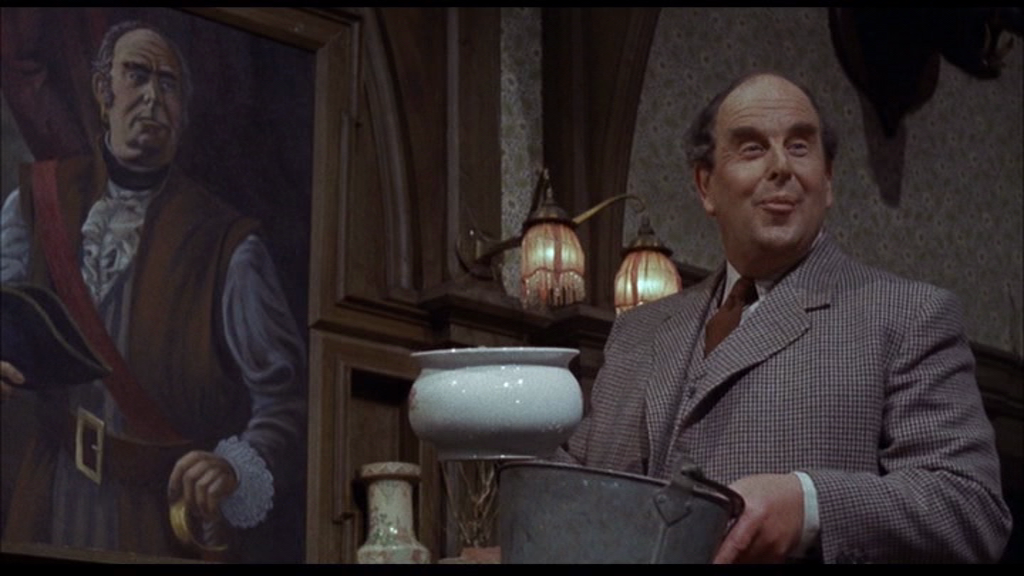
A loose adaptation of the J.B. Priestley novel that was the source material for James Whale’s 1932 classic. Here, an American car salesman (Tom Poston) is forced by the weather the stay overnight at a client’s house, which is full of loonies—and his client’s corpse. The ensuing madness is not unlike a bedroom farce, as each member of the family is forced to report at midnight or forfeit their share of the fortune. Some want to kill Poston, some want to fuck him, some both. A mediocre effort, even considered apart from its associations with one of the greats.
The Gimmick: None.
8. 13 Frightened Girls (1963, 88 minutes)
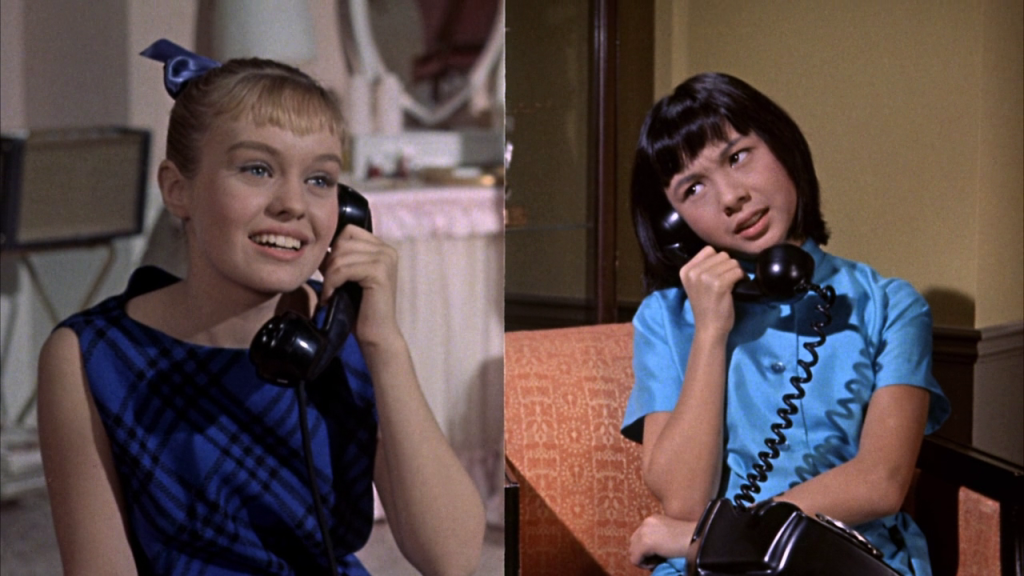
At a boarding school for diplomats, the daughters of the American (Kathy Dunn) and Chinese (Lynne Sue Moon) ambassadors engage in a game of cold war cat and mouse. Little pitchers do have big ears. Not really a horror movie despite the title, poster, director, marketing, etc. The title doesn’t much align with the plot, either, as only the two aforementioned girls are frightened, the thirteen others not especially relevant to the action. Still, it’s a fun, funny movie (“Miss Pittford doesn’t allow us to talk about world problems—she doesn’t think it’s diplomatic”), and Moon is strong in her film debut.
The Gimmick: In the opening scene, one of the girls is allowed to drive the school bus, her prize for placing first in Latin. Castle filmed thirteen versions of these scenes, each with a character from a different country. This would enable him to screen thirteen versions of the movie, depending on the location and language of its audience. This is the only way in which the title is faithful to the movie.
7. Strait-Jacket (1964, 93 minutes)

Joan Crawford chops off the heads of her husband (Lee Majors) and his lover (Patricia Crest). Twenty years later, she is released from the asylum and moves in with her daughter (Diane Baker), who witnessed the murder as a three-year-old child (Vicki Cos). Crawford is surprisingly restrained right after What Ever Happened to Baby Jane?, but her insistence on changes to the script dulls the effect of the ending. Still, Strat-Jacket has some nice kills and a good twist. With an increased focus on violence, screenwriter Robert Bloch seems to anticipate what slashers will do with Psycho in the ‘eighties—as opposed to Homicidal, which is more faithful to the spirit of Hitchcock’s original.
The Gimmick: No gimmick: Joan Crawford was enough. Castle was tempted, though. He pitched a collaboration to Gillette (“Go see Strait-Jacket and then cut your head off with a Gillette”), who turned him down, and at the theaters, he gave out cardboard axes streaked with fake blood. “I just couldn’t resist,” he writes in his memoir, Step Right Up! I’m Going to Scare the Pants off America (1976).
6. 13 Ghosts (1960, 85 minutes)
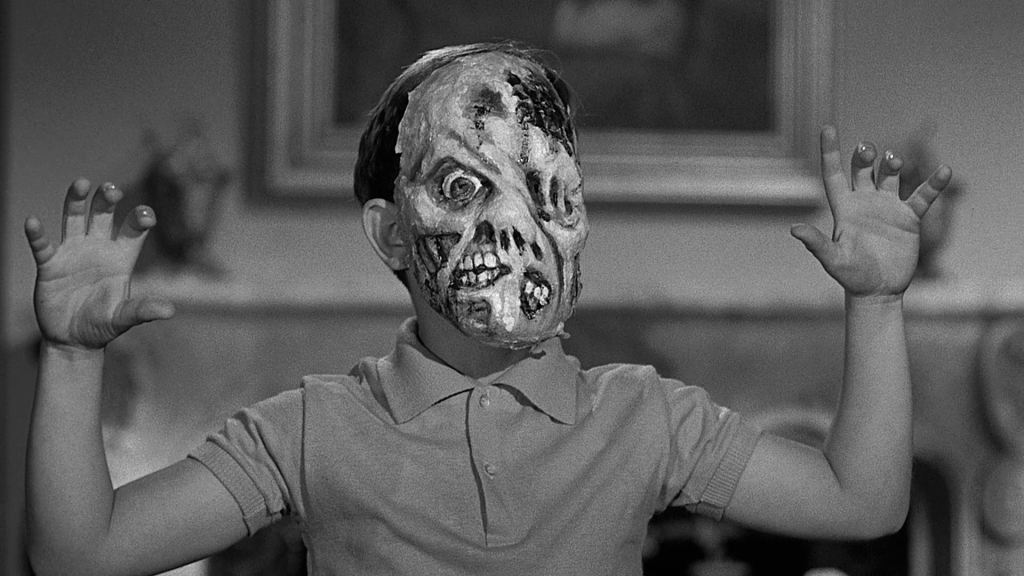
An occultist who has been experimenting with “the other world” dies and leaves his house to his brother (Donald Woods) and his brother’s family. As the title suggests, the house is haunted, though the ghosts are not the main threat to domestic stability. 13 Ghosts feels like something Disney might have made in the ’sixties, Flubber with decapitations, or The Hardy Boys and the Mystery of the Headless Lion Tamer. Perfect for a Sunday afternoon.
The Gimmick: The Illusion-O. Audiences were given “ghost viewers,” cardboard glasses with two lenses: a red Ghost Viewer and a blue Ghost Remover. When the characters put on their glasses, so does the audience, choosing to either sharpen the image of the ghosts or remove them from the screen. These are fairly easy to find on eBay.
5. Mr. Sardonicus (1961, 89 minutes)
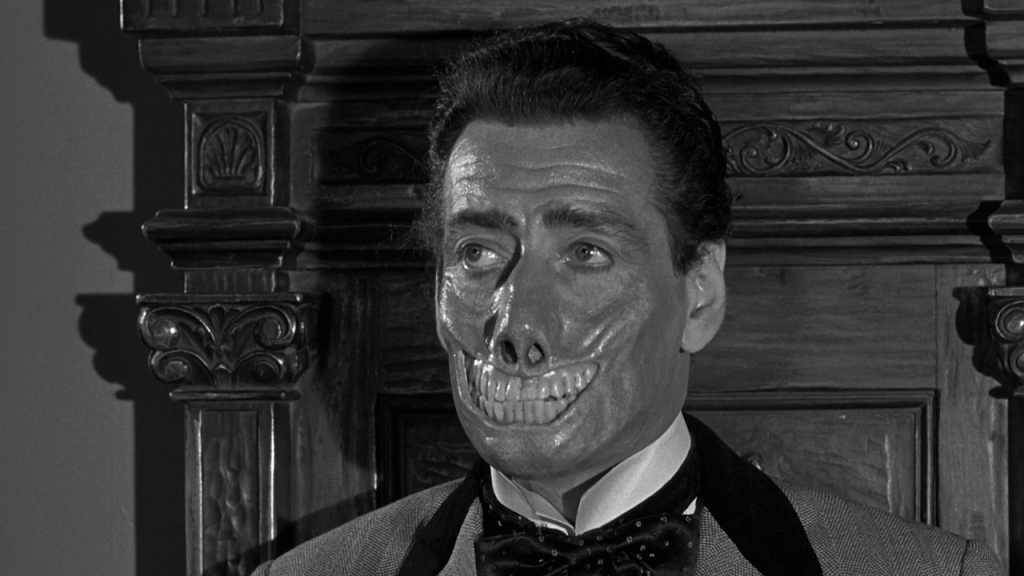
A man whose mouth is frozen in a smile (Guy Rolfe) asks a London physician (Ronald Lewis) to attempt dangerous experiments to restore his face. This is Castle’s Gothic movie, like something out of Universal in the ‘thirties or ‘forties, full of English moors, creaky castles, and mad noblemen. The effects are spectacular, and it’s one of his scarier efforts. Includes a conversation about ghouls that is A+.
The Gimmick: The Punishment Poll. Audiences were given a card with a picture of a hand. At the end of the movie, they would vote on whether to punish Mr. Sardonicus, giving either a thumbs-up (mercy) or turning the card over for a thumbs-down (no mercy). According to Castle, the manager of the theater would tally the votes and then play the appropriate ending, though audiences almost always chose no mercy. However, the mercy ending has not been found, with some concluding that it was never filmed.
4. Let’s Kill Uncle (1966, 92 minutes)

After the death of his father (William Castle), a twelve-year-old boy, Barnaby Harrison (Pat Cardi), inherits a $5 million estate and moves in with his uncle (Nigel Green), a retired James Bond-type from British intelligence. Uncle wants that money, but he’s awfully civil about it, declaring upfront his intention to murder Barnaby, even allowing that his house is Switzerland—neutral—and thus all attempts on his nephew’s life will be carried on outside the premises. A delightful game of cat and mouse ensures. With shades of Count Dracula and excessive good breeding, Green seems positively charmed by Barnaby’s attempts to kill him. Jolly good fun.
The Gimmick: None.
3. Homicidal (1961, 88 minutes)
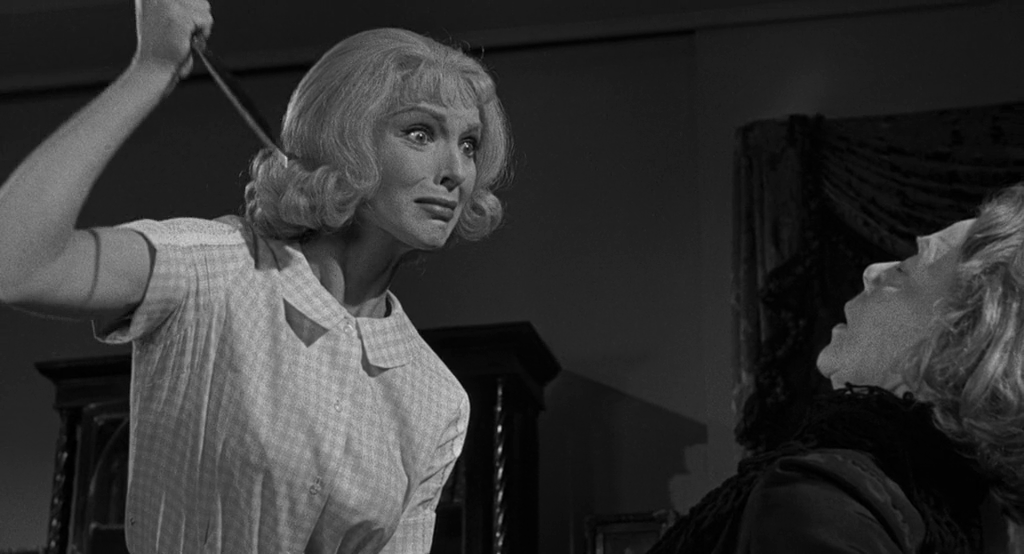
A woman (Jean Arless) pays a bellboy (Richard Rust) two grand to marry her, but at their wedding, she murders the justice of the peace (James Westerfield). A great, shameless Psycho rip-off, matching the best of the same from Brian de Palma. The opening murder, which prompts the investigation that comprises most of the movie, is a great shock, in part because it reverses the expected genders of victim and murderer. Earlier in his career, Castle wanted to direct an adaptation of Sherwood King’s novel If I Die Before I Wake, but he was told he would never convince Harry Cohn, the President of Columbia Pictures, to make a movie with a “murderess.” Cohn was eager, nevertheless, when the project was pitched by Orson Welles, who changed the title to The Lady from Shanghai. Castle was an associate producer, and he would continue to make movies about “murderesses” throughout his career. Arless, whose performance is flawless, is his best.
The Gimmick: The Fright Break. A pause that allowed patrons too frightened to watch the final two minutes to leave and get their money back. They had to sign a card that read, “I’m a bona fide coward.” Yellow footsteps were stenciled onto the floor from the theater to the box office, renamed Cowards’ Corner. Nurses waited with blood-pressure machines in the lobby. Outside, yellow stripes warned passers-by, “Cowards, keep walking.”
2. House on Haunted Hill (1959, 75 minutes)
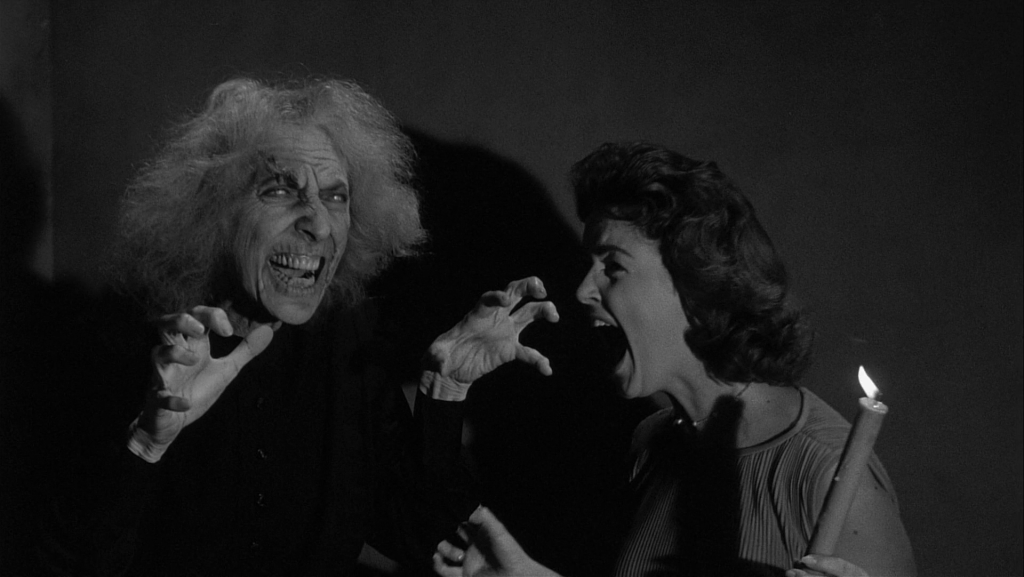
An eccentric millionaire (Vincent Price) and his wife (Carol Ohmart) invite five people to a haunted house party. Whoever can last the night will win $10,000. House on Haunted Hill is Castle’s scariest movie—my dad jokes that he still has scars from his date’s fingernails—and the first appearance of Mrs. Slydes (Leona Anderson) is probably the greatest scare in ‘fifties horror. Price, who has the speech and mannerisms of a graduate of Milford Academy and Yale University, uses this to great effect, providing a dry and high-brow contrast to the movie’s low-brow antics. He is also best able of all Castle’s actors to embody the director’s motivating interest in combining humor and the macabre. See, for example, the comedy and menace in his delivery of a pair of lines like, “I have rented the house on Haunted Hill tonight so that my wife can give a party.” Pause. “She’s so amusing.”
The Gimmick: The Emergo. Castle released a twelve-foot skeleton into the theater that flew on writes over the heads of the audience, from the screen to the balcony.
1. The Tingler (1959, 82 minutes)

A scientist (Vincent Price) discovers a parasite that grows inside of each of us, feeding on our fear but vulnerable to our screams. He tests the theory on a deaf woman (Judith Evelyn) who owns a silent movie theater. The release of the Tingler into that theater—its shadow is at one point projected onto the screen, then the screen turns black and we hear the confused voices of the audience—suggests that one is likewise loose in the theater where we are watching The Tingler. An absolute camp classic, from its opening shot of disembodied, screaming heads to its blockbuster climax. The Tingler is where Castle’s form best matches his subject matter: it is a movie about our experience at the movies, and the scene where the deaf woman is murdered plays like a silent thriller from the ‘teens. At the end, Price’s voice dares us to doubt its story: “The next time you are frightened in the dark… don’t scream,” a Candyman-like invitation to tempt the monster when you get back to the presumed safety of your home.
The Gimmick: The Percepto. Castle installed buzzers under the seats, which shocked audiences when the Tingler appeared onscreen. He estimates he buzzed 20 million behinds.